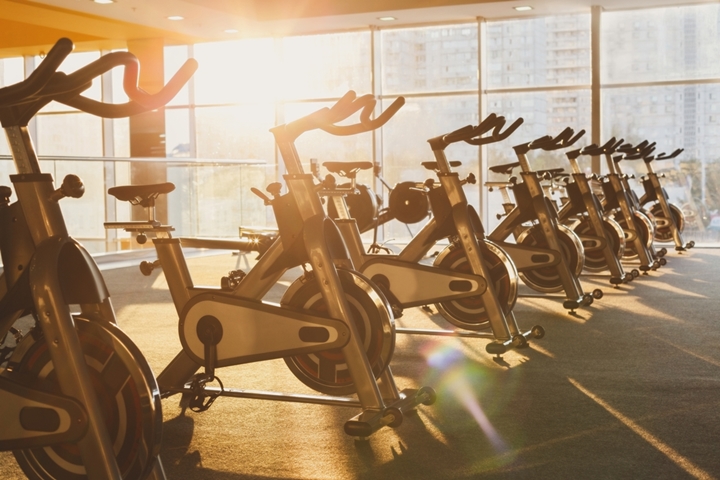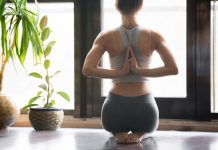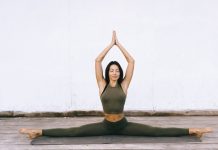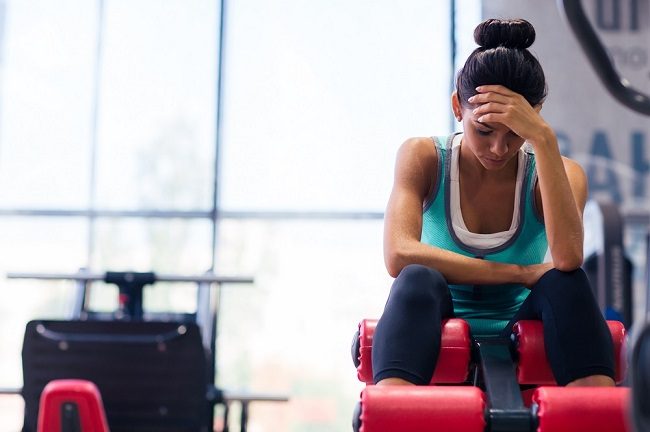Vinyasa Flow or just Flow Yoga, as it is sometimes referred to, is a series of poses that will move you through the power of inhaling and exhaling. Each movement is smoothly flowing and almost dance-like, which explains the name. The literal translation of vinyasa from Sanskrit is “connection” and in terms of yoga asanas, it can be interpreted as a connection between movement and breath. The breath acts as an anchor to the movement as you flow from one pose to another with an inhalation or exhalation.

The cat-cow stretch is an example of a very simple vinyasa, because the spine is arched on an inhale and rounded on an exhale. A sun salutation sequence is an example of a more complex vinyasa where each series is done in time with an inhalation or an exhalation. But when done with awareness, even a quiet seated pose like Parivrtta Janu Sirsasana (Revolved Head-to-Knee Pose) can be an adapted a mindful vinyasa.
Developed by Parrabhi Jois, Vinyasa Flow is a fast flowing, soft, relaxed version of Ashtanga Yoga. There is no set sequence as in Ashtanga, but music and choreography is incorporated to make each class (often in a heated room) more innovative and challenging.
Strength training
Vinyasa Yoga serves as a strength training process and helps build lean muscle mass throughout the body. The different poses, especially the standing, arm balances, backbends, and inversions utilise the body resistance while placing stress on muscles and fatiguing them. All muscle groups receive equal attention, creating balanced strength throughout the body.
Flexibility
The continual flowing movements of Vinyasa Yoga help stretch and elongate muscles while they are being strengthened, allowing you a greater mobility and range of motion. The constant flow and synchronised breathing allows for fresh oxygen to fuel and loosen muscles. Flexibility in the muscles also takes off the stress off the joints, ligaments, and tendons, and help prevent injuries like muscle pulls and tears.
Relief from stress
Vinyasa yoga works on physical, mental, emotional, and spiritual levels to connect the mind with the body and relieve stress and anxiety. Mindfully moving through the continual flowing poses during a vinyasa class can help alleviate the static thoughts that may be running through your head. Focusing on the inhale and exhale of your breath results in a positive, calming effect on your central nervous system.
Physiological benefits
Vinyasa Yoga has been known to reduce risks of heart diseases, high blood pressure, stroke, and type 2 diabetes. Additionally, its practitioners also claim that it can help detoxify the body so functions, systems, and organs operate more efficiently, and that it can balance your metabolic system, helping you sleep better and aid you in weight loss.
 If you like to focus on the power of breathing and flowing movement through poses, you will enjoy Vinyasa Flow. Its strength is in its diversity; there is no single philosophy, rulebook, or sequence that teachers must follow. This makes it essential that you find a teacher you enjoy and can relate to. If your first flow class doesn’t rock your world, keep trying different teachers.
If you like to focus on the power of breathing and flowing movement through poses, you will enjoy Vinyasa Flow. Its strength is in its diversity; there is no single philosophy, rulebook, or sequence that teachers must follow. This makes it essential that you find a teacher you enjoy and can relate to. If your first flow class doesn’t rock your world, keep trying different teachers.


 Traqade
Traqade


































[…] and is the root of all movement-based types of yoga, together with Ashtanga, Iyengar, Bikram, Vinyasa, and others. This is a very apt creation to yoga for learners because it provides them a elementary […]
[…] Supply hyperlink […]
Very interesting from what I saw in the body of your article. You write very well, you know? You’re great.